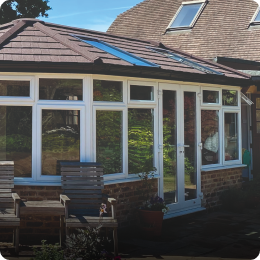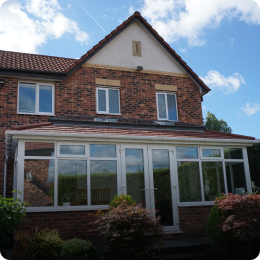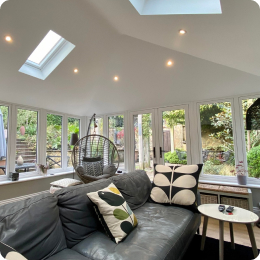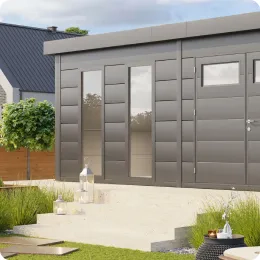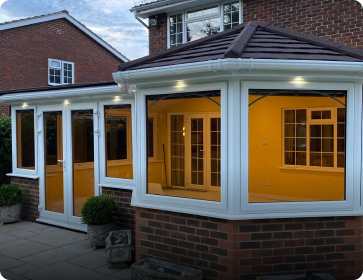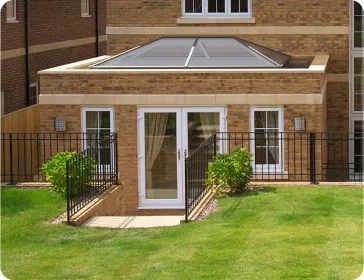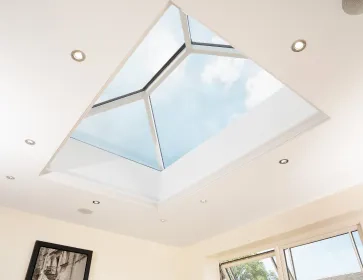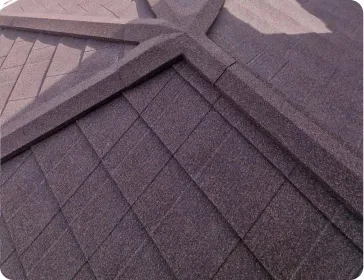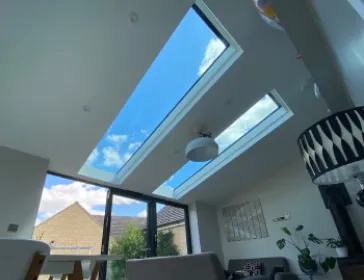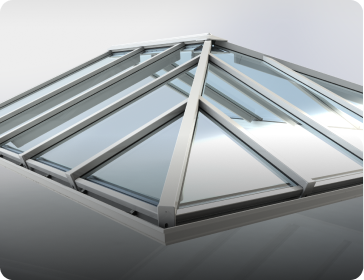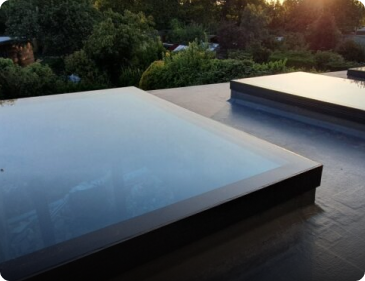
A conservatory has long been a cherished addition to many homes, offering a bright, airy space to relax and enjoy a closer connection to the outdoors. These elegant structures can enhance both the beauty and functionality of a home, creating a versatile area for dining, entertaining, or simply unwinding in natural light.
However, as conservatories age, some homeowners may find that their once-beloved space has more negatives than positives. Issues like insulation, temperature control, and wear and tear can arise over time – but with the right conversion, you can transform this space into a comfortable, year-round living area that truly adds value to your home. Whether you’re dreaming of a home office, extra living space, or kitchen extension, a conservatory conversion could be the solution.
If you’re unsure where to start, we’ll walk you through the process of converting your conservatory into a fully functional room and explore the benefits of different types of conversions.
Why Convert a Conservatory?
The Problems with Older Conservatories
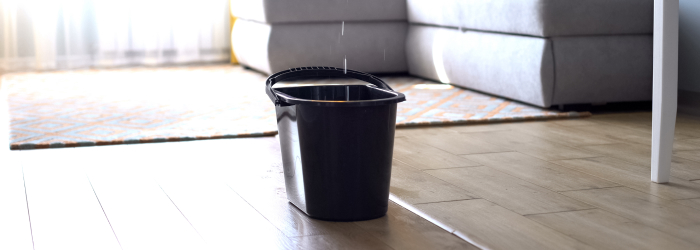
The Problems with Older Conservatories
Many older conservatories face common issues that make them less practical:
- Poor Insulation: Many conservatories were built with materials that don’t offer adequate insulation, leading to uncomfortable temperature fluctuations throughout the year. In summer, the space may become unbearably hot, while in winter, it can feel too cold to use.
- Leaks and Drafts: Older conservatories are often prone to leaks and drafts, particularly around windows and doors. These issues can make the space feel draughty and damp, which can detract from the overall comfort.
- Temperature Extremes: Glass or polycarbonate roofs, which are common in older conservatories, tend to exacerbate temperature extremes, making it hard to enjoy the space during certain times of the year.
Why Converting Makes Sense
If your conservatory is no longer meeting your needs, a conversion could be the perfect way to address these issues. With a conservatory conversion, you can expect:
- Year-Round Comfort: By improving the insulation and updating the structure, you can create a space that’s comfortable throughout the year, no matter the season.
- Lower Energy Bills: With better insulation, you’ll find your conservatory stays warmer in the winter and cooler in the summer, which can reduce your energy bills over time.
- Increased Property Value: Converting your conservatory adds usable living space, which can increase the value of your home, making it more appealing to future buyers.
- Enhanced Aesthetics and Functionality: A well-executed conversion gives you the chance to update the design of your conservatory, creating a space that not only looks modern but also serves as a functional purpose – whether it’s a home office, extra lounge, or a playroom for the kids.
Step-by-Step Guide: How to Convert a Conservatory
Step 1: Assess Your Current Conservatory
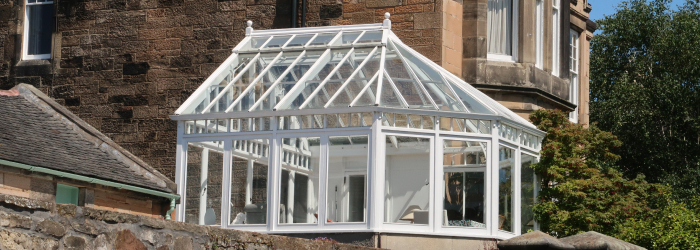
The first step in any conservatory conversion project is to assess the current state of the space. Take a close look at:
- The Frame and Foundations: Are these in good condition? A solid frame and foundations are essential for a successful conversion, so check for any signs of wear and tear.
- The Roof: Is your roof made of glass or polycarbonate? Older roof types are more likely to have insulation issues, which could be affecting the overall comfort of the space. The roof condition will help determine the type of conversion required.
The condition of your conservatory will determine whether you need a simple roof replacement, structural alterations, or a full-room transformation. You may need to call a professional to determine this.
Step 2: Choose the Type of Conversion
There are several options available, depending on your needs and the existing condition of your conservatory.
- Roof-Only Conversion: If you’re happy with the layout but want to improve insulation and aesthetics, a conservatory roof conversion might be the best option. SupaLite specialises in lightweight tiled roof systems that not only enhance insulation but also add a modern look to the space. This type of conversion is a popular choice for homeowners looking to update the conservatory without needing major structural changes.
- Partial Conversion: This involves upgrading the walls, adding insulation, replacing the roof and possibly introducing new flooring or heating to make the space more comfortable. It’s a great option if you don’t need a full extension but still want to transform your conservatory into a more functional space.
- Full Extension Conversion: If you’re looking to completely reimagine your conservatory, a full extension conversion might be what you need. This involves potentially adding structural foundations, adding walls, heating, new flooring, and even plumbing and electrics if necessary. This option turns your conservatory into a fully integrated room, such as a home office, extra living room, or even a new kitchen extension.
Related article: Conservatory vs Extension: Which Should You Choose for Your Home?
Step 3: Get Expert Advice

Before diving into any conversion project, it’s important to seek expert advice. Structural changes can be tricky, and working with professionals will ensure that your plans are safe and solutions meet your needs.
SupaLite specialises in high-quality conservatory roof replacements, providing a stylish and energy-efficient solution for homeowners. Their lightweight tiled roofing systems improve insulation and temperature control, ensuring your conservatory remains comfortable all year round. With expert craftsmanship and bespoke designs, SupaLite helps transform your space into a practical and inviting part of your home.
Step 4: Budget and Costs
As with any home improvement project, the cost is an important consideration. However, several factors will influence the cost of your conservatory conversion:
- Size of the Conservatory: Larger spaces will naturally cost more to convert due to the increased materials and labour required.
- Roof Material: SupaLite offers a range of roofing options, from lightweight tiled roofs to high performance glass roofs each with different price points.
- Additional Features: Adding features like heating, new flooring, or even electrics will increase the overall cost of the project.
- Location: Costs will naturally vary depending on the area you live in.
Estimated Costs for Different Conversion Options
It’s challenging to provide estimated costs for conservatory conversions, as each one is bespoke. However, here’s a general idea of what you might expect to pay:
- Roof-Only Conversion: Typically depends on the size and the type of roof you choose. Contact your local installer for a quote – Locate an Installer
- Partial Conversion: Costs for this type of conversion will be bespoke, depending on how much work your conservatory requires, but you can expect to pay more than a roof-only conversion.
- Full Extension Conversion: The most comprehensive and expensive conversion, which can include groundwork, walls, utilities, and flooring.
Step 5: Check Building Regulations and Planning Permissions
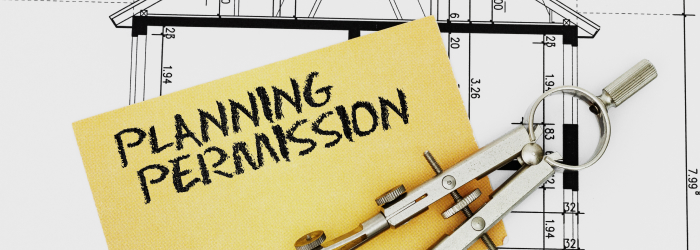
Before starting your conversion, you’ll need to ensure that your plans comply with UK building regulations for insulation, ventilation and safety. For example, major structural changes may require planning permission. If you’re adding heating or utilities, you’ll need to follow specific regulations for insulation and energy efficiency. Be sure to check with local authorities or consult your conversion specialist to ensure you’re meeting all legal requirements.
Related article: Do You Need Building Regulations for a Solid Conservatory Roof?
Types of Roof Conversions
When it comes to roof conversions, there are many options available. However if you’re looking to make your conservatory feel like an extension of your home, a solid conservatory roof is the way to go. With a solid roof, you can still have a variety of features to allow natural light into your roof. SupaLite offers several options that can completely transform the look and functionality of your conservatory.
- Tiled Roofs: SupaLite’s lightweight tiled roofs are designed to improve insulation, reduce noise, and offer a modern, traditional appearance that blends seamlessly with your home. Tiled roofs also provide excellent thermal performance, keeping your space comfortable all year-round.
Browse SupaLite Roof Extentions - Glass Roofs: If you prefer a more contemporary look, SupaLite offers glass roofs with improved thermal efficiency. These allow natural light to flood the space while still providing improved insulation compared to traditional glass or polycarbonate roofs.
Browse SupaLite S2 Glass Roof
Related article: Conservatory Roof Options And Types
Converting your conservatory into a fully functional, year-round living space is a fantastic way to maximise the potential of your home. Whether you choose a roof-only conversion, a partial upgrade, or a full extension, the benefits – comfort, long-term savings, and increased property value – are clear.
With a SupaLite tiled roof replacement, you can transform your conservatory into a comfortable, energy-efficient space that can be enjoyed all year round – free from extreme temperatures and poor insulation.
Discover our high-performance roof replacement solutions!

